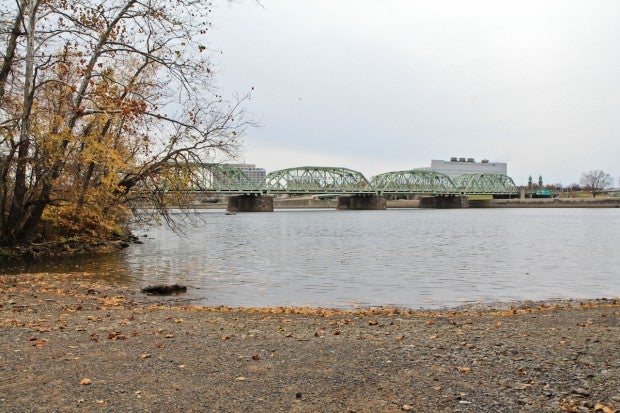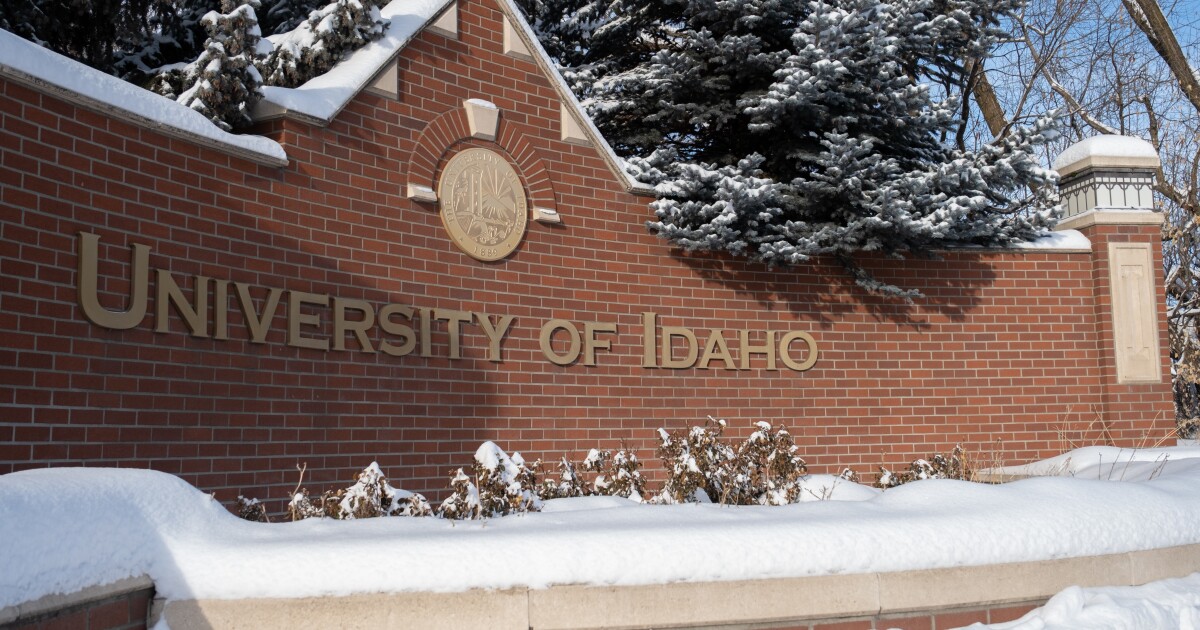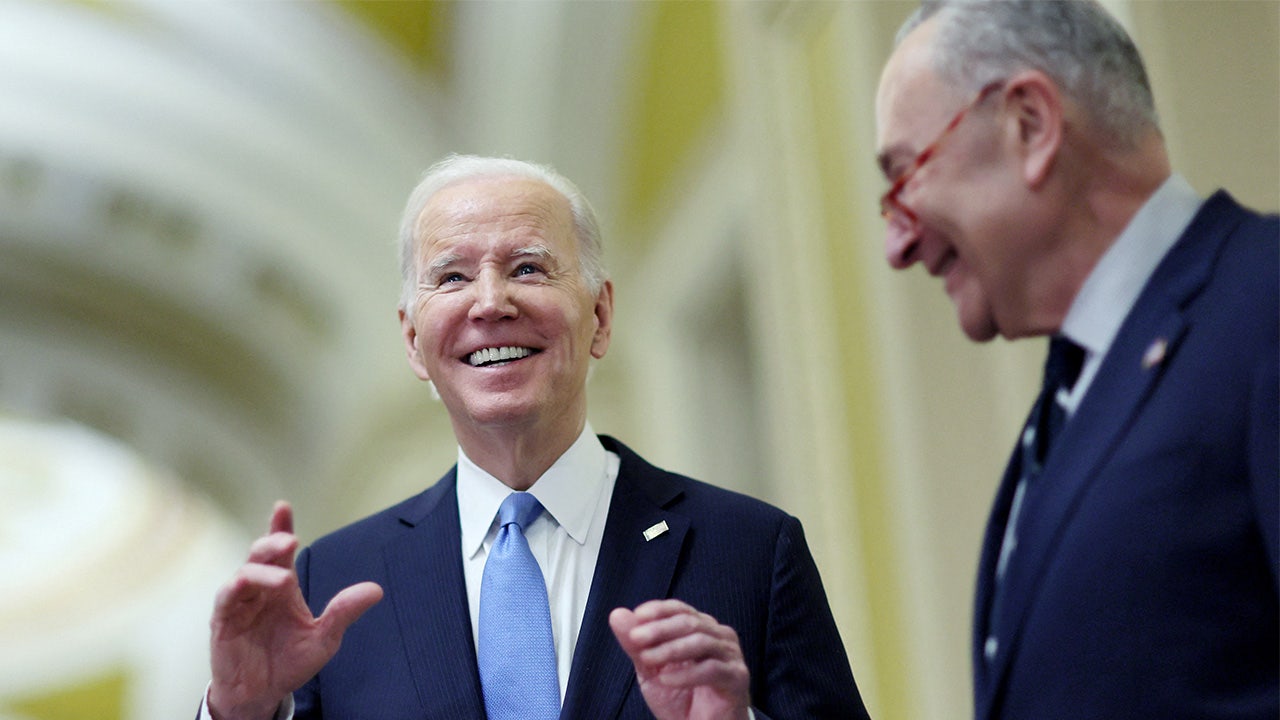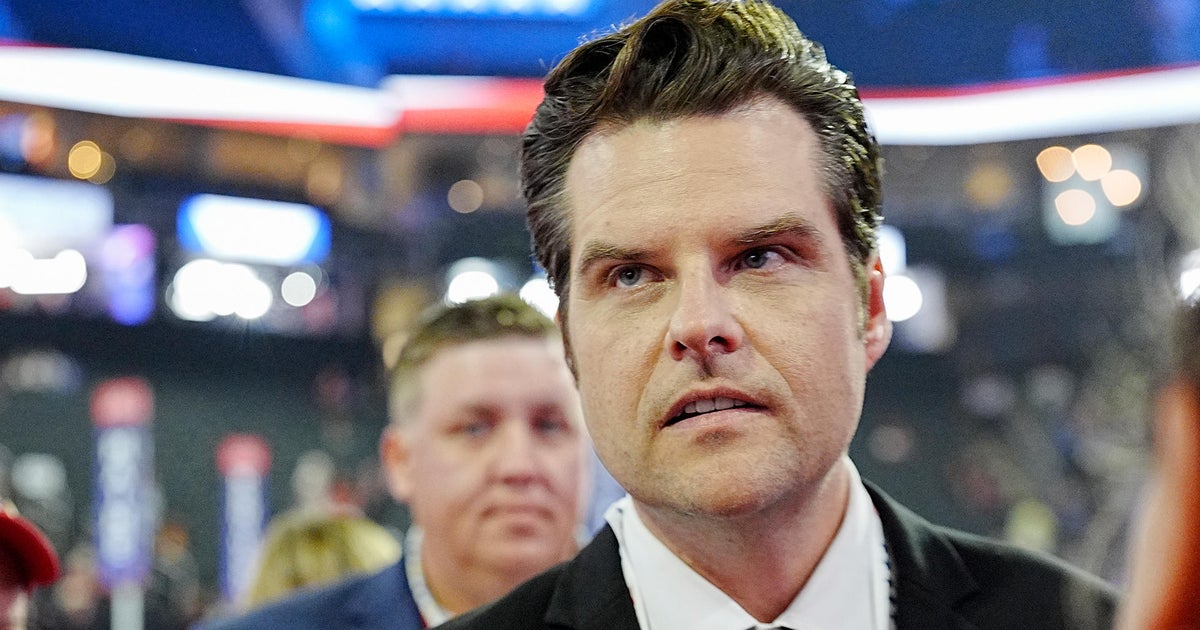North Dakota
Red River Valley water pipeline project has funding for another 25 to 30 miles

FARGO — Crews continue to lay pipe that will deliver Missouri River water to the Red River Valley as the pipeline is expected to extend another 25 to 30 miles in the coming two years.
As construction progresses, officials are working to calculate what the cost will be to water users — including residents of Fargo and Grand Forks — who will pay 25% of the project’s cost.
“I would say in weeks, not months, we should have pretty firm numbers for users,” said Duane DeKrey, general manager of the Garrison Diversion Conservancy District, which is overseeing the Red River Valley Water Supply Project.
The
$1.1 billion project
will use the McClusky Canal and 125 miles of pipeline that is 72 inches in diameter to deliver 165 cubic feet of water per second to the Red River to augment water supplies during periods of severe drought.
Given current funding commitments, the project remains on track for completion in nine years, by 2032, DeKrey said.
So far, workers have completed the water intake for the project near Washburn, north of Bismarck, and the pipeline outlet near Cooperstown that will empty water into the Sheyenne River, which joins the Red River near Harwood.
Construction of the pipeline has been concentrated near Carrington, where five miles of pipe have been laid, starting 10 miles east of Carrington.
About $244 million is available for building and designing the water project during the 2023-25 biennium, including carryover funds.
“It’s not all going for the pipeline, but by far the majority is,” DeKrey said. Money also is available for engineering studies for a water treatment plant. Missouri River water will be treated to remove tiny plants and animals before it enters the Red River to prevent the introduction of foreign species.
The $70 million treatment plant will be located before the water is transferred to the pipeline from the McClusky Canal, which takes water pumped from Lake Audubon, a sub reservoir of Lake Sakakawea on the Missouri River.
The cities of Fargo and Grand Forks are reviewing their proposed portion of the project’s local cost share. Combined, Fargo, Cass Rural Water District, Grand Forks and East Grand Forks account for 84% of the pipeline’s customers, DeKrey said.
Once the reviews by Fargo and Grand Forks conclude, engineers will calculate monthly water users’ fees for the project.
“That’s still in discussion,” Fargo Mayor Tim Mahoney said. He expects rate figures should be ready in about six weeks, and the figure will depend upon whether the project is able to get some federal money.
Legislators have signaled their intent to ultimately provide a total of $953 million in state funding for the water supply project.
“The Red River Valley Water Supply Project is essential to serve the central and eastern side of our state during drought conditions,” Andrea Travnicek, director of the North Dakota Department of Water Resources, said in a statement. “We are proud to support sustainable and resilient water infrastructure like this project and others that put the Missouri River to beneficial use for our citizens, industry and overall economy.”
After languishing for decades as the now-defunct federally sponsored Garrison Diversion Project, the state took over what became the Red River Water Supply Project nine or 10 years ago.
“After sitting basically idle for a lot of years things seem to really be moving,” DeKrey said.
In the coming weeks and months, Garrison Diversion officials will be setting up informational meetings with local water users.
Patrick Springer first joined The Forum in 1985. He covers a wide range of subjects including health care, energy and population trends. Email address: pspringer@forumcomm.com
Phone: 701-367-5294

North Dakota
National monument proposed for North Dakota Badlands, with tribes' support

BISMARCK, N.D. — A coalition of conservation groups and Native American tribal citizens on Friday called on President Joe Biden to designate nearly 140,000 acres of rugged, scenic Badlands as North Dakota’s first national monument, a proposal several tribal nations say would preserve the area’s indigenous and cultural heritage.
The proposed Maah Daah Hey National Monument would encompass 11 noncontiguous, newly designated units totaling 139,729 acres (56,546 hectares) in the Little Missouri National Grassland. The proposed units would hug the popular recreation trail of the same name and neighbor Theodore Roosevelt National Park, named for the 26th president who ranched and roamed in the Badlands as a young man in the 1880s.
“When you tell the story of landscape, you have to tell the story of people,” said Michael Barthelemy, an enrolled member of the Mandan, Hidatsa and Arikara Nation and director of Native American studies at Nueta Hidatsa Sahnish College. “You have to tell the story of the people that first inhabited those places and the symbiotic relationship between the people and the landscape, how the people worked to shape the land and how the land worked to shape the people.”
The National Park Service oversees national monuments, which are similar to national parks and usually designated by the president to protect the landscape’s features.
Supporters have traveled twice to Washington to meet with White House, Interior Department, Forest Service and Department of Agriculture officials. But the effort faces an uphill battle with less than two months remaining in Biden’s term and potential headwinds in President-elect Donald Trump ‘s incoming administration.
If unsuccessful, the group would turn to the Trump administration “because we believe this is a good idea regardless of who’s president,” Dakota Resource Council Executive Director Scott Skokos said.
Dozens if not hundreds of oil and natural gas wells dot the landscape where the proposed monument would span, according to the supporters’ map. But the proposed units have no oil and gas leases, private inholdings or surface occupancy, and no grazing leases would be removed, said North Dakota Wildlife Federation Executive Director John Bradley.
This undated image provided by Jim Fuglie shows Bullion Butte in western North Dakota. Credit: AP/Jim Fuglie
The proposal is supported by the MHA Nation, the Spirit Lake Tribe and the Standing Rock Sioux Tribe through council resolutions.
If created, the monument would help tribal citizens stay connected to their identity, said Democratic state Rep. Lisa Finley-DeVille, an MHA Nation enrolled member.
North Dakota Gov. Doug Burgum is President-elect Donald Trump’s pick to lead the Interior Department, which oversees the National Park Service, including national monuments. In a written statement, Burgum said: “North Dakota is proof that we can protect our precious parks, cultural heritage and natural resources AND responsibly develop our vast energy resources.”
North Dakota Sen. John Hoeven’s office said Friday was the first they had heard of the proposal, “but any effort that would make it harder for ranchers to operate and that could restrict multiple use, including energy development, is going to raise concerns with Senator Hoeven.”
North Dakota
North Dakota Supreme Court Considers Motion to Reinstate Abortion Ban While Appeal is Pending
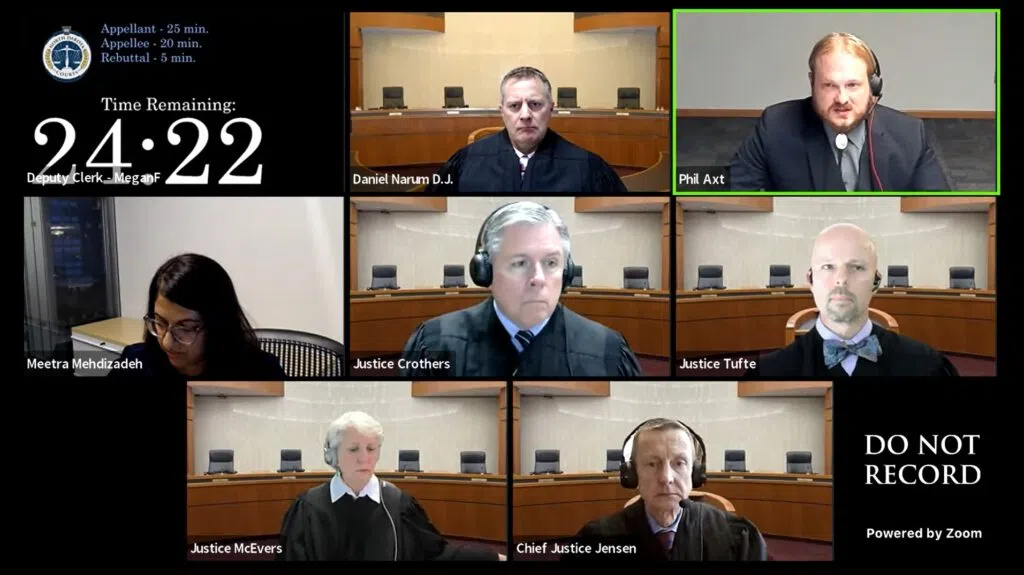
The North Dakota Supreme Court hears arguments involving abortion via Zoom on Nov. 21, 2024. (Screenshot Bismarck Tribune via the North Dakota Monitor)
(North Dakota Monitor) – North Dakota’s solicitor general called on the North Dakota Supreme Court to reinstate an abortion law struck down by a lower court until a final decision in the case is made, arguing that the ban must remain in effect because the state has a compelling interest in protecting unborn life.
“We say that not to be dramatic, but because the district court seems to have lost sight of that,” Phil Axt told justices Thursday.
The ban, signed into law by Gov. Doug Burgum in April 2023, made abortion illegal in all cases except rape or incest if the mother has been pregnant for less than six weeks, or when the pregnancy poses a serious physical health threat.
South Central Judicial District Court Judge Bruce Romanick vacated the law in September, declaring it unconstitutionally vague and an infringement on medical freedom.
He further wrote that “pregnant women in North Dakota have a fundamental right to choose abortion before viability exists.”
The law went into effect just weeks after the North Dakota Supreme Court ruled the state’s previous abortion ban unconstitutional and found that women have a right to seek an abortion for health reasons.
Axt argued Thursday that Romanick’s judgment striking down the 2023 law conflicts with the Supreme Court’s prior ruling, and that Romanick’s legal analysis contains “glaring errors.” Axt claimed there’s nothing in the state constitution that supports a right to abortion until the point of viability.
“It’s been clear since our territorial days that in order to justify killing another human being, there must be a threat of death or serious bodily injury,” Axt said.
Meetra Mehdizadeh, an attorney representing the plaintiffs, said to reverse Romanick’s decision even temporarily would be to disregard many serious problems he identified with the statute.
The ban does not sufficiently explain to doctors when they may legally provide abortions — which chills their ability to provide necessary health care for fear of prosecution, she said.
“The district court correctly held that the ban violates the rights of both physicians and patients, and staying the judgment and allowing the state to continue to enforce an unconstitutional law would be nonsensical,” Mehdizadeh said.
Axt countered that the law is not vague, and that doctors are incorrect to assume they would face criminal penalties for good-faith medical decisions.
If doctors are confused about the ban, said Axt, “the solution is not striking down the law — it is providing some professional education.”
In briefs filed with the court, the state also argued that Romanick’s judgment vacating the law seems to conflict with his original order declaring the law unconstitutional.
While the order identifies a right to abortion until the point of fetal viability, Romanick’s judgment does not include any reference to viability. The state is now confused as to whether it can now enforce any restrictions on abortion, Axt said.
North Dakota still must observe abortion regulations established under other laws not challenged in the lawsuit, Mehdizadeh said.
Axt further claimed that Romanick’s judgment should be put on hold because it addresses a “novel” area of law, and because it takes a supermajority of the Supreme Court to declare a statute unconstitutional.
“Statutes should not be presumed unconstitutional until this court has had an opportunity to weigh in on the matter, and a super majority of this court is of that opinion,” Axt said.
Justice Daniel Crothers said he questioned Axt’s logic.
“Any novel issue where the district court declares something unconstitutional, it’s sounding like you’re suggesting that we should presume that it’s wrong,” Crothers said to Axt.
The appeal is the latest step in a lawsuit brought against the state by a group of reproductive health care doctors and a Moorhead, Minnesota-based abortion provider, Red River Women’s Clinic. The clinic previously operated in Fargo, but moved across the state line after Roe v. Wade was overturned in 2022.
The ban, passed with overwhelming support by both chambers of the Republican-dominated Legislature, set penalties of up to five years in prison and a maximum fine of $10,000 for any health care professionals found in violation of the law.
The arguments were only on whether Romanick’s decision should be put on hold during the appeal, not on the merits of the case itself, which the Supreme Court will consider separately. The justices took the matter under advisement.
North Dakota
Four western North Dakota volleyball teams punch a ticket to state semifinals

BISMARCK, N.D. (KFYR) – The quarterfinal round of the NDHSAA State Volleyball tournament played out in the Fargodome Thursday with four teams from the west side of the state advancing to the semifinals.
In Class A, Century avenged a quarterfinal loss from a year ago to advance to the semifinals. Meanwhile, Legacy upended West Fargo Horace in an upset.
The two teams will face off in the semifinals, which guarantees that a team from the west will make the Class A State Championship game. The Patriots are 2-0 against the Sabers this season.
In Class B, South Prairie-Max and Medina-Pingree-Buchanan both advanced to the semifinals in their first ever state tournament appearance.
The Royals defeated Kenmare-Bowbells 3-0. The Thunder defeated Central McLean 3-0. That guarantees that a team from the west will also make the Class B State Championship game as the Royals and Thunder will face off in the semifinals.

Copyright 2024 KFYR. All rights reserved.
-
Business1 week ago
Column: OpenAI just scored a huge victory in a copyright case … or did it?
-

 Health1 week ago
Health1 week agoBird flu leaves teen in critical condition after country's first reported case
-

 Business6 days ago
Business6 days agoColumn: Molly White's message for journalists going freelance — be ready for the pitfalls
-
World1 week ago
Sarah Palin, NY Times Have Explored Settlement, as Judge Sets Defamation Retrial
-

 Science3 days ago
Science3 days agoTrump nominates Dr. Oz to head Medicare and Medicaid and help take on 'illness industrial complex'
-

 Politics5 days ago
Politics5 days agoTrump taps FCC member Brendan Carr to lead agency: 'Warrior for Free Speech'
-
/cdn.vox-cdn.com/uploads/chorus_asset/file/25739950/247386_Elon_Musk_Open_AI_CVirginia.jpg)
/cdn.vox-cdn.com/uploads/chorus_asset/file/25739950/247386_Elon_Musk_Open_AI_CVirginia.jpg) Technology4 days ago
Technology4 days agoInside Elon Musk’s messy breakup with OpenAI
-

 Lifestyle5 days ago
Lifestyle5 days agoSome in the U.S. farm industry are alarmed by Trump's embrace of RFK Jr. and tariffs

